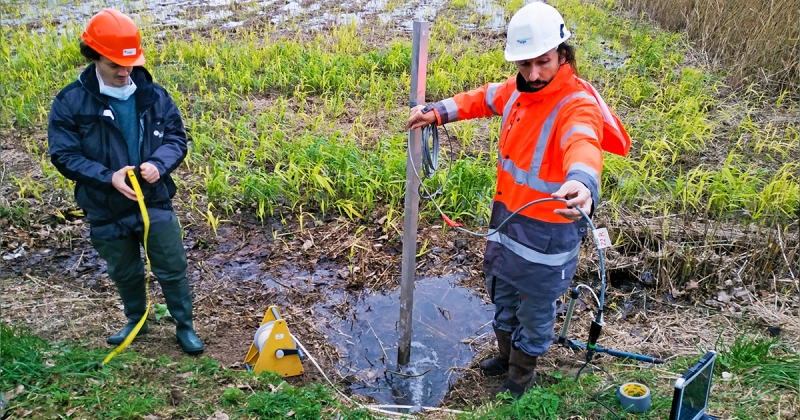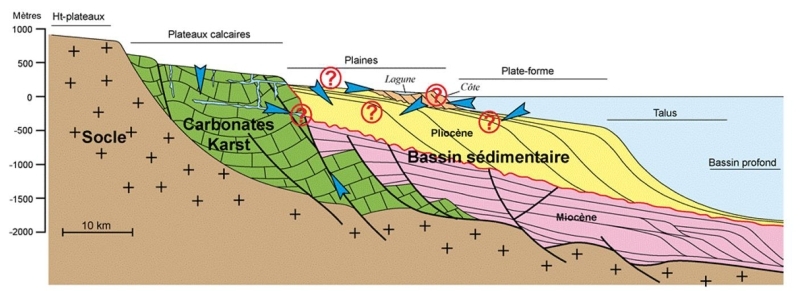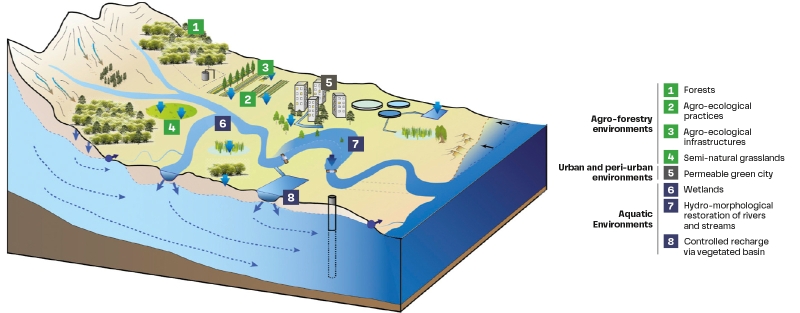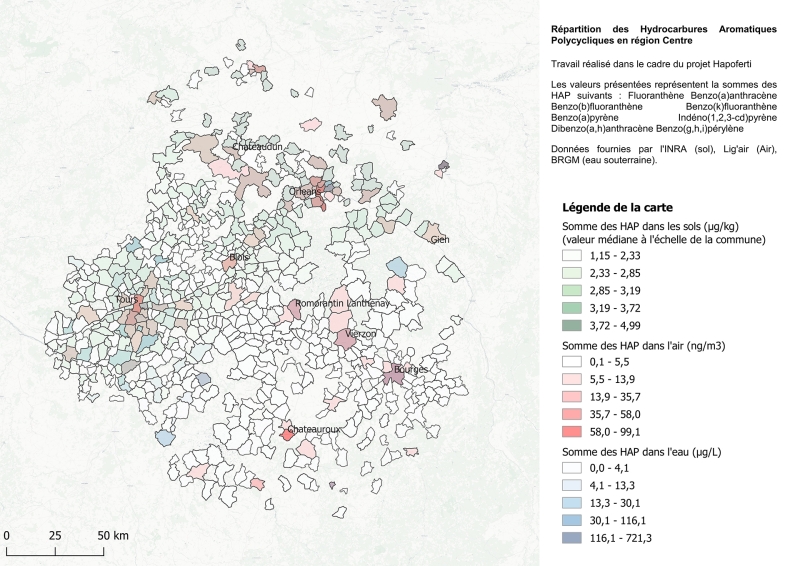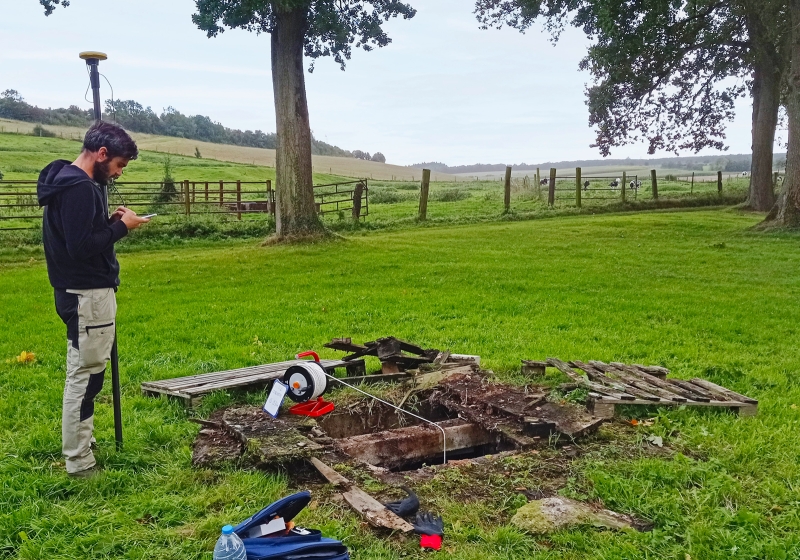Measurement of the infiltration of treated wastewater from a wastewater treatment plant into the dune aquifer via a reed bed
in Agon-Coutainville (50). © BRGM - G. Picot-Colbeaux
Groundwater management
Highlights
Thau: explaining the salinisation phenomenon
The groundwater in the Thau hydrosystem (in the karstic Jurassic limestone to the west of Montpellier) is of major importance to the area, since it is used for various purposes: drinking water supply, spa therapies, shellfish farming etc. However, this coastal aquifer is subject to salinisation, due to occasional intrusions of brackish water from the underwater Vise spring (a phenomenon called inversac).
Using an innovative system, BRGM recorded new data about the Vise and provided a hypothesis concerning the mechanism behind this phenomenon, by analysing the hydrological and hydrogeological conditions in relation to how the spring functions in so-called “normal” periods and during inversac periods. In this way, two new indicators (risk of inversac/end of inversac) have been made available to the different stakeholders in the region via a web platform.
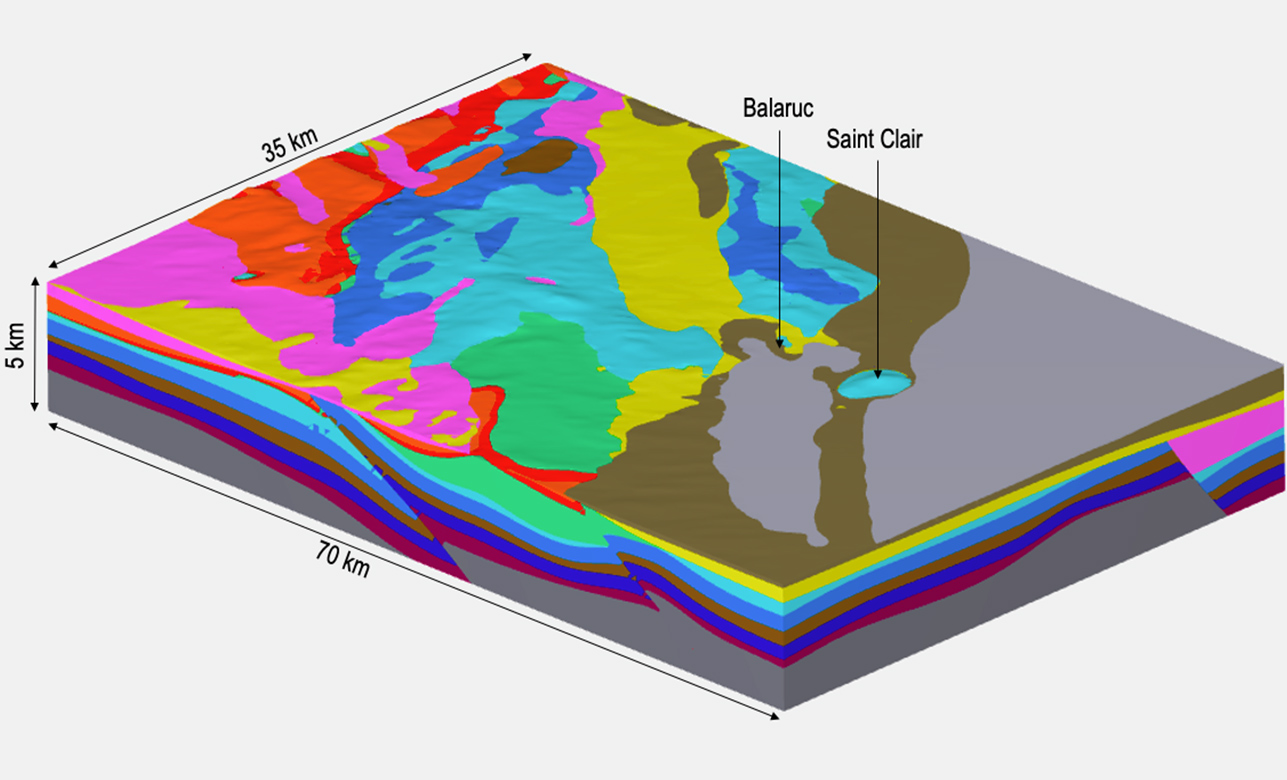
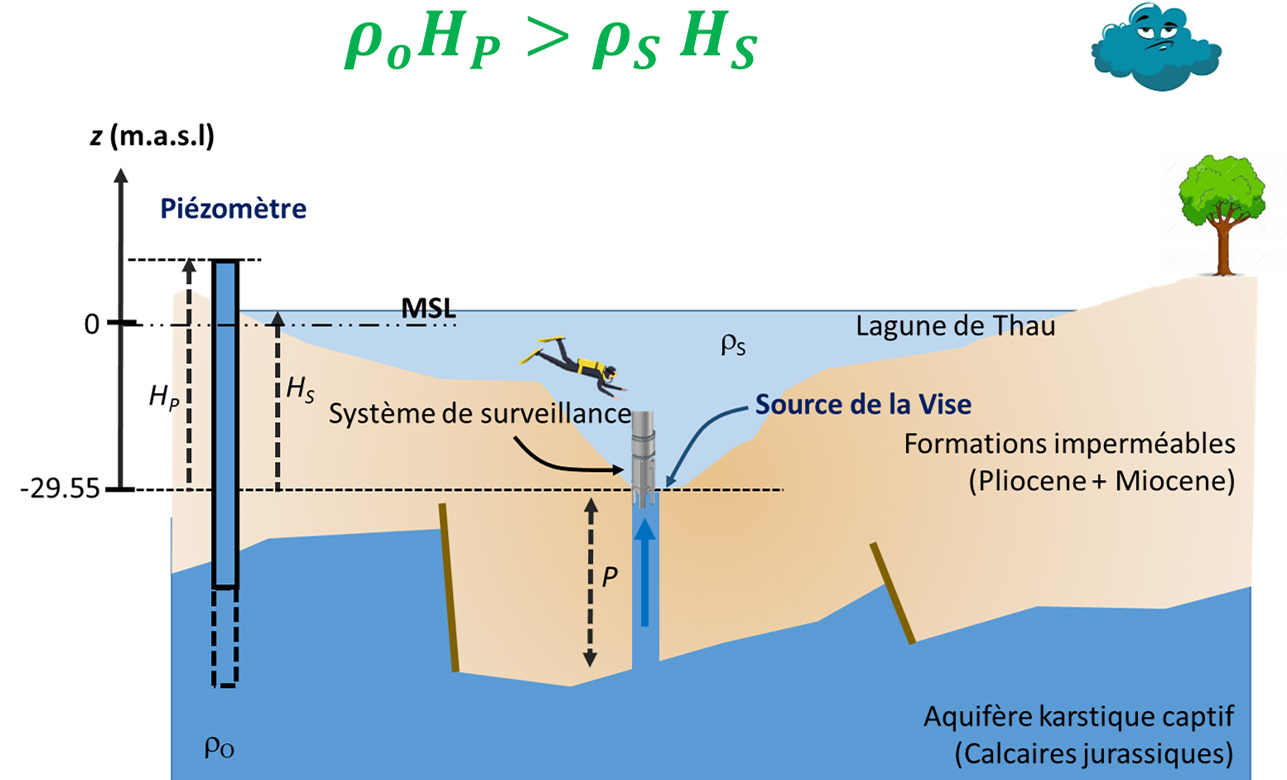
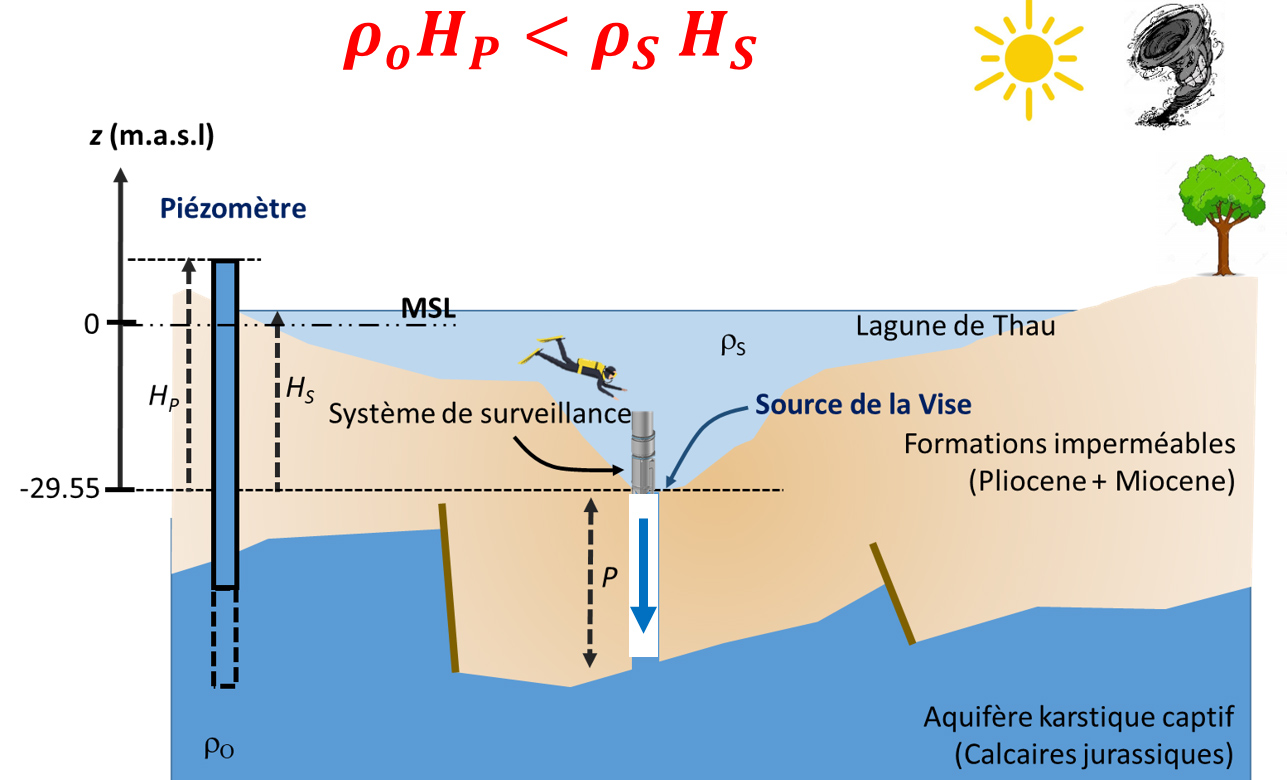
BRGM is studying the recharge by infiltration on the Agon-Coutainville site
As part of the EViBAN project, BRGM was able conduct more detailed studies of controlled aquifer recharge on the recharge site, and study how treated wastewater from the Agon-Coutainville coastal treatment plant (Manche) is purified by the ground and the aquifer. BRGM’s innovative, multidisciplinary approach (drawing on experimental R&D and digital technologies) confirmed and clarified the dynamics of the water purification by the soil and the aquifer in this coastal environment.
Dem’Eaux Roussillon: modellin
The freshwater resource on the coast of the Roussillon plain can be contaminated by seawater, if it is over-exploited. As part of the Dem’Eaux Roussillon project, which aimed to describe this coastal aquifer system and understand its interactions with the weather, surface water and the sea, BRGM coordinated research work that modelled the extension of the aquifer several tens of kilometres out under the sea, taking into account the extent of the various interactions and the aquifer’s hydrodynamic behaviour. The digital platform Visi’Eau 66 is one of the operational results of this project.
Situation of coastal sedimentary aquifers and interactions with their environment (Duvail and Aunay, 2005). © BRGM
New information about the nature of exchanges between aquifers and rivers
The Eaux-SCARS project, which started in 2021 and will last six years, aims to improve our understanding of how the carbonate-rock aquifers in the North Aquitaine Basin function, from their recharge systems to their outlets, notably in order to assess their behaviour in the light of climate change. BRGM’s hydrogeological investigations included two major field campaigns combining piezometric measurements, hydrochemical analyses and differential gauging. Fourteen hydrometric stations were also set up along four rivers to monitor temperature and conductivity.
The first results provided new information about the nature of exchanges between aquifers and rivers and the role of watercourses in aquifer recharge. In terms of geology, the interpretation of past data (acquired by heliborne survey campaigns), supported by reinterpretations of seismic lines, have led to a major review of the geometry and structural system of the North Aquitaine Basin.
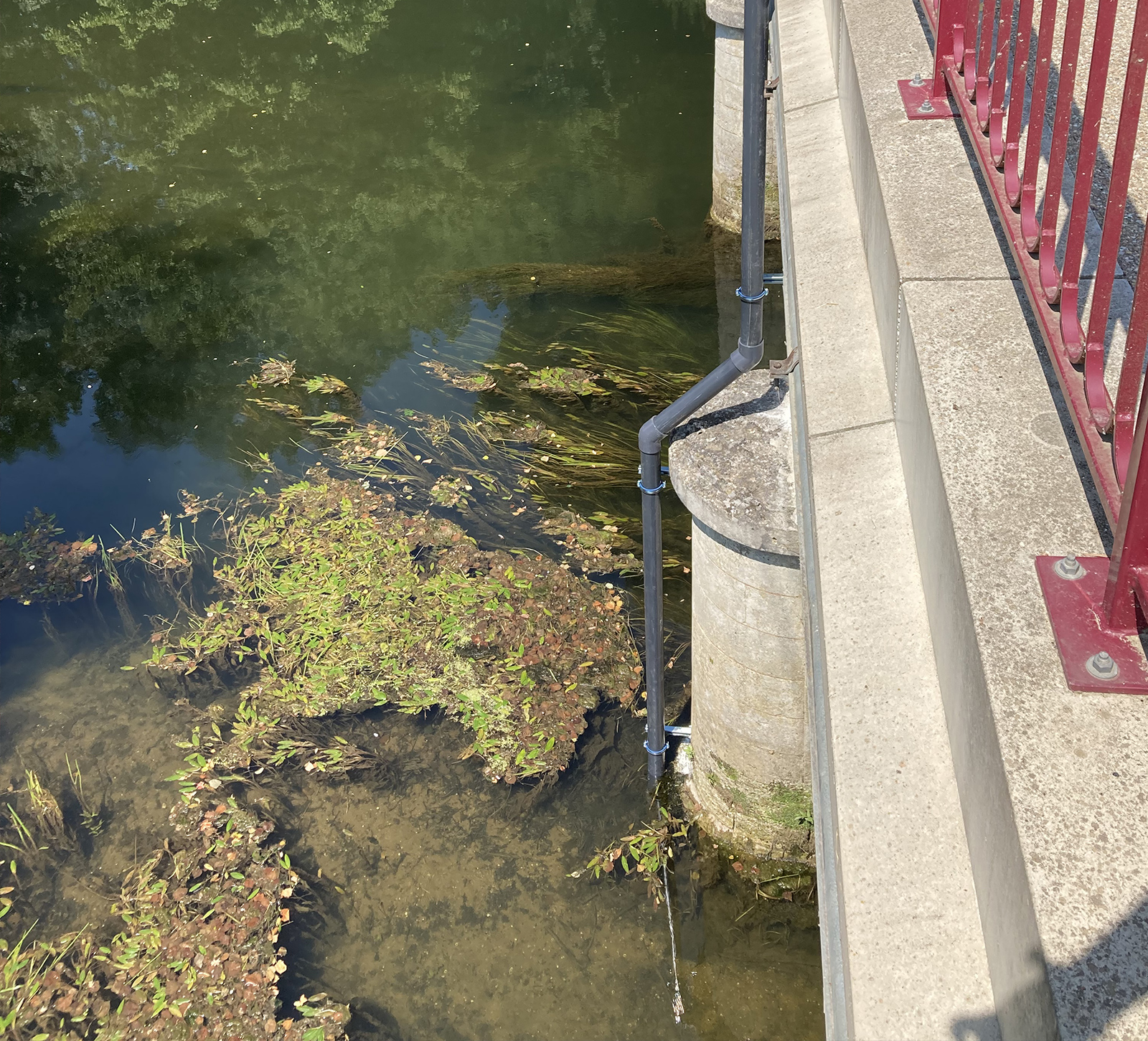
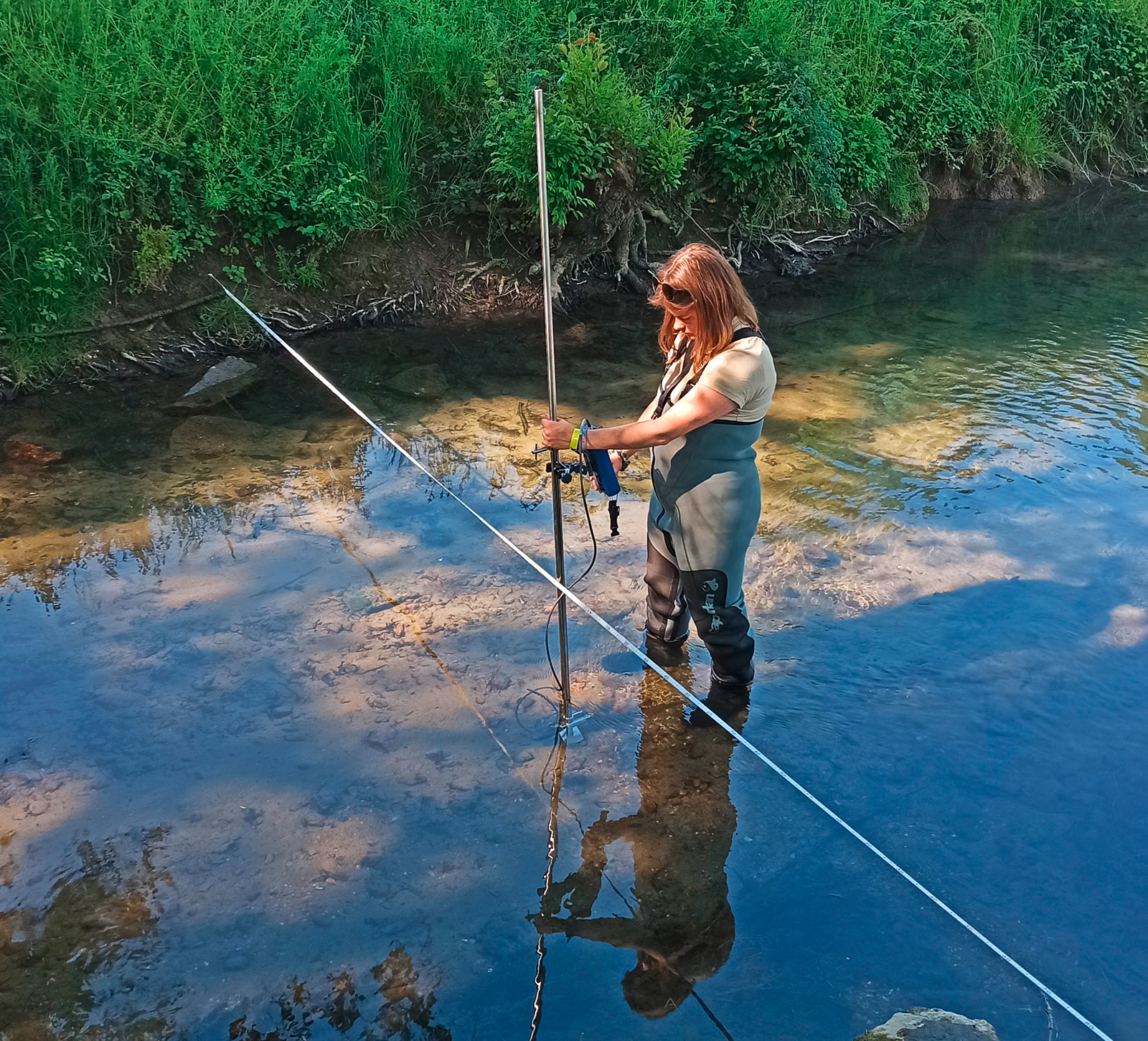
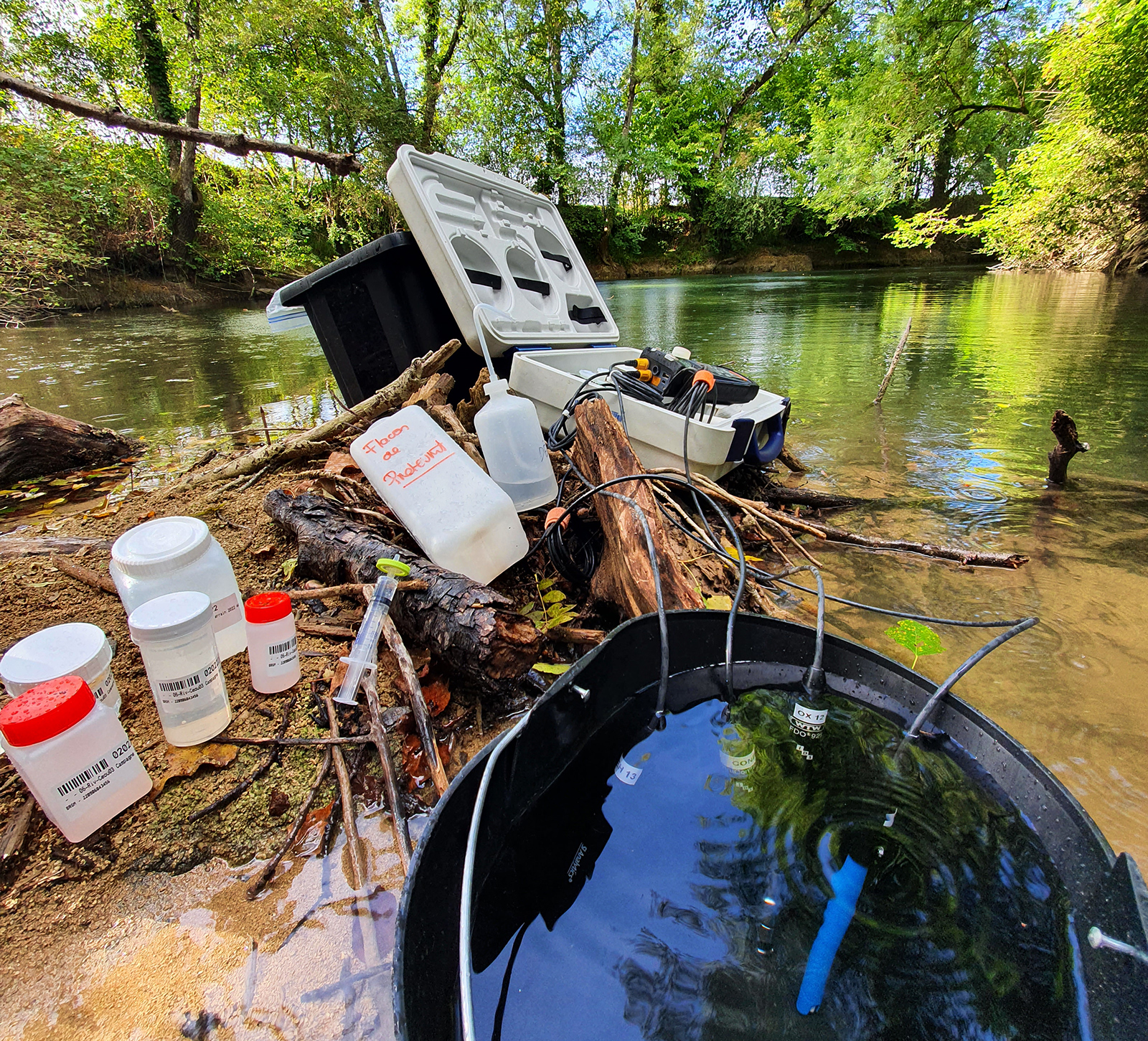
NBSs for sustainable groundwater management?
BRGM is developing the concept of Nature-Based Solutions for Sustainable Groundwater Management (in French SFN-ESO), as part of its SFN-Gest’ESO project. During the first months, the project enabled us to better understand the links and interactions between these solutions and aquifers and draw up models for the different types. We also reviewed the existing literature and past experiments, along with the hydrogeological and economic effects of these solutions.
Eight types of NBSs that can be used for sustainable groundwater management (SFN-ESO). © BRGM
Estimating the impact of exposure to environment-based endocrine disrupto
Exposure to endocrine disruptors is thought to contribute to weight gain and fertility problems.
These endocrine-disrupting chemicals include polycyclic aromatic hydrocarbons and certain pesticides. The HAPOFERTI project aims to determine the level of environmental exposure to such compounds (triazoles and PAHs) through the water, soil and air in the Centre-Val de Loire region, in order to estimate their impact on the population. The levels were cross-referenced with geographical data linked to 200 obese and infertile patients. The goal was to observe the cellular action of these pollutants and to develop prevention or screening tools. The results show that certain PAHs could be responsible for obesity and that triazoles may have a harmful effect on in vitro ovarian cells.
Distribution of Polycyclic Aromatic Hydrocarbons in the Center region. © BRGM – A. Henriot
Hydrodynamic models for integrated water resource management
The SMAEL (Joint Syndicate for the supply of water from the Lys), in collaboration with the Aire-sur-la-Lys drinking-water supply plant, draws water from the Lys river in the Pas-de-Calais to produce 20 million m3 of drinking water, which is distributed to the European Metropolis of Lille, the Lens-Liévin conurbation and seven municipalities in the Pas-de-Calais département. After two years of exploration work conducted by BRGM’s teams, the data collected and cross-analysed by experts provided the first hydrodynamic models, describing the characteristics of the hydrosystem’s flows. SMAEL has renewed the R&D partnership with BRGM for three years.
Piezometric measurements in the Haute-Lys basin (Hauts-de-France). © BRGM - G. Picot-Colbeaux




